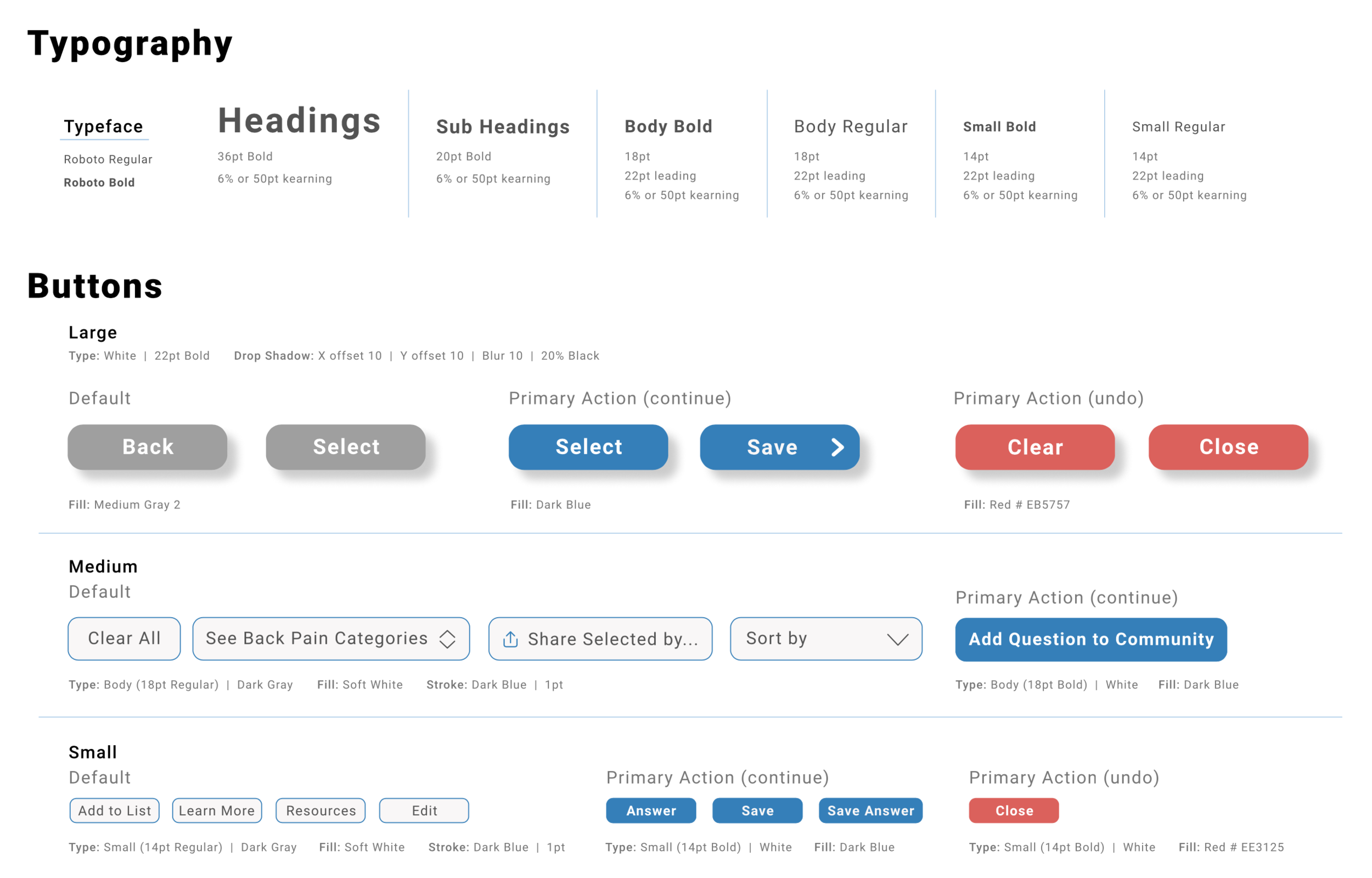BEDSIDE CHATS
Co-Design & UX/UI: Surveys | Interviews | Qualitative Analysis | Prototyping
OVERVIEW
Bedside Chats is a digital tool to guide conversations between physicians and patients, and is designed to help patients remember questions they want to ask during a doctor visit. The tool helps patients find questions related to their specific health concerns and needs and allows them to save these questions and organize them in lists.
As part of an interdisciplinary graduate course, I was part of a student team that worked with the medical device inventor team to help determine improvements that will benefit users and stakeholders as they work to bring the product to market.
Users: patients
Stakeholders: health care systems, families and other support groups
Competition: sources where patients get information on the types of questions to ask a doctor
Purpose:
Determine whether this tool provides an added benefit compared to how patients normally prepare for a doctor’s visit
Help the inventor team develop the framework for a website version
DEFINING THE FOCUS
Review the user experience flow of the current application
Score the current app based on it’s usefulness, usability and desirability
Identify target stakeholders for co-design sessions
Different age groups and stakeholders will rate the app differently based on three criteria: usefulness, usability,
and desirability.
As a team, we divided patients into two age demographics: those under the age of 50 and those 50 and older. We scored the current app based on these three criteria for both age groups and healthcare practitioners. We asked the inventor team to do the same.
Inventor Team and Design Team Scorecard Activity:
We scored the three criteria on a scale of 1-10
(ex.1 being least usable and 10 being the most usable)
for each stakeholder group. These were based on our own assumptions and preconceptions of the app.
The 50+ age group was chosen as the target user group as there was consensus that there was room for improvement in terms of usability as older patients may have a difficult time navigating the app and understanding how different views connect to each other. Additionally, older patients have many medical conditions and would benefit greatly from this concept whereas younger patients don’t have as many medical conditions.
PARTICIPANT SESSIONS
Through co-design, assess if this concept is desirable to 50+ demographic as well as from an industry perspective
Create a low-fidelity mock-up of a website to assess what features are wanted, needed and not needed for this age group
Create a higher-fidelity mock-up incorporating received feedback as a jumping off point for the inventor team
Co-design participants were asked to complete an initial survey prior to meeting virtually over Zoom in order to gain insight on past experiences while visiting healthcare practitioners, as well as their current technology usage and knowledge. The answers in the survey were used to help guide the interview sessions.
A low-fidelity prototype was created with the focus being on the content and functions. During interview sessions, participants were able to interact with this prototype, talk through their thought process, and provide feedback.
ANALYSIS
After two weeks of interviews and collecting feedback, we clustered our findings based on the three criteria. In terms of usability, we divided this up further into the website’s main functions and noted what participants found confusing, what they liked, potential areas of concern, and recurring ideas for new features.
The survey and interview sessions revealed how the doctor
visit experience would change and benefit users throughout different phases of the process when using the Bedside Chats digital tool.
PROTOTYPING
A higher-fidelity prototype was developed based on the feedback and insights gained from co-design sessions and analysis.
DELIVERABLES
As one of the final deliverables, I created a website style guide to assist the future design and development team in creating the desktop version of the digital tool.
CONCLUSIONS
Usability
The usability was improved in terms of experience and interface design
Organization and merging of content also improved usability
Usefulness
Majority of patients said the tool would be helpful for all types of doctor visits
Helpful for those who are forgetful
Great tool to use to get family and loved ones informed on medical appointments
Great for new diagnoses, surgeries or patients who see a variety of doctors and specialists
Area of concern: may promote too many questions to ask doctor
Desirability
Majority of patients found concept desirable and would use it themselves
All Healthcare Professionals who participated supported this concept and would recommend it to patients
Based on the survey results, the majority of people prepare before seeing their doctor and could benefit from this concept
Area of concern: privacy








